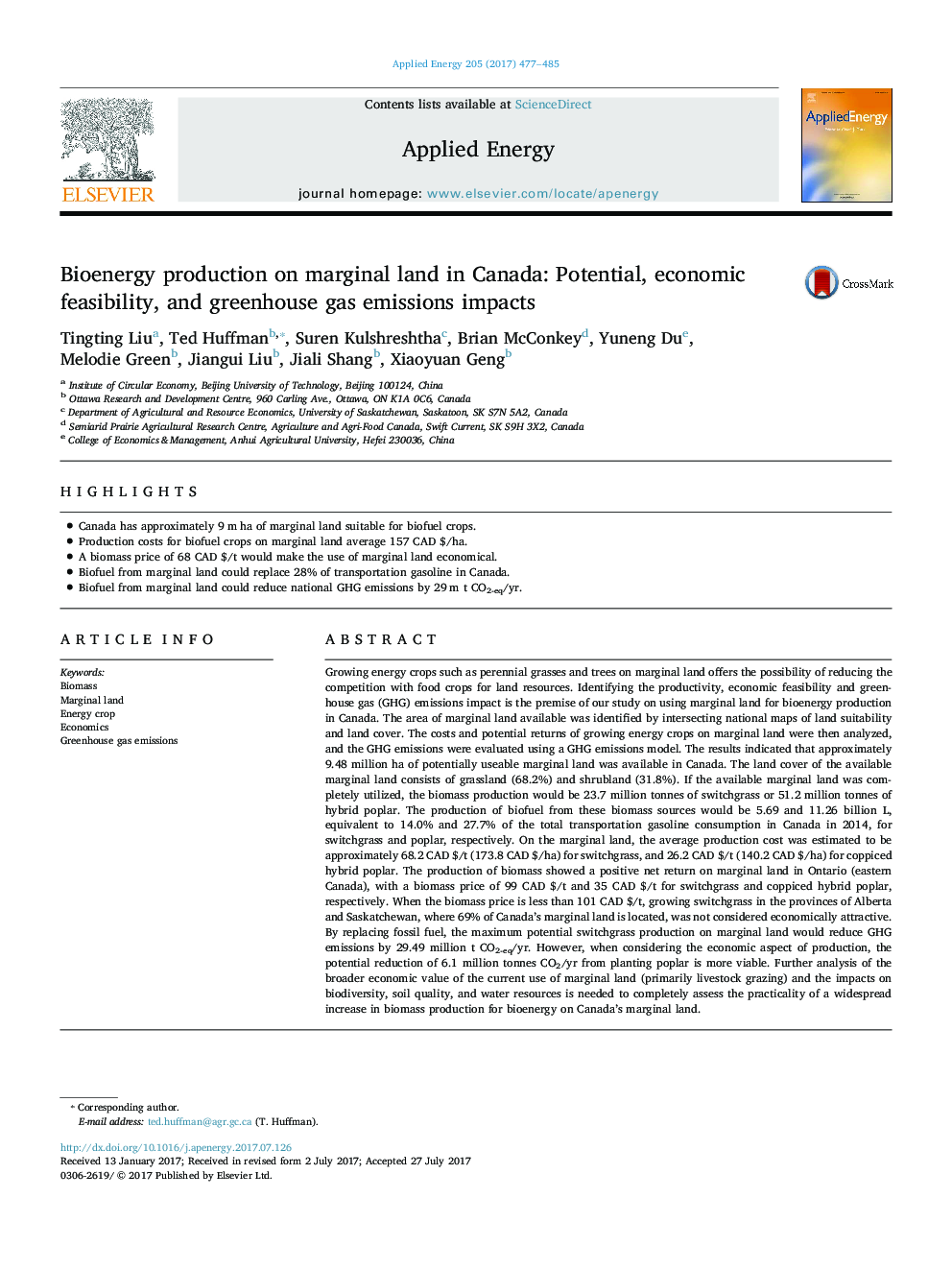| کد مقاله | کد نشریه | سال انتشار | مقاله انگلیسی | نسخه تمام متن |
|---|---|---|---|---|
| 4915862 | 1428085 | 2017 | 9 صفحه PDF | دانلود رایگان |
عنوان انگلیسی مقاله ISI
Bioenergy production on marginal land in Canada: Potential, economic feasibility, and greenhouse gas emissions impacts
ترجمه فارسی عنوان
تولید بیو انرژی در زمین های حاشیه ای در کانادا: پتانسیل، امکان اقتصادی، و انتشار گازهای گلخانه ای تاثیر می گذارد
دانلود مقاله + سفارش ترجمه
دانلود مقاله ISI انگلیسی
رایگان برای ایرانیان
کلمات کلیدی
زیست توده، سرزمین حاشیه، محصول انرژی، اقتصاد، انتشار گازهای گلخانه ای،
موضوعات مرتبط
مهندسی و علوم پایه
مهندسی انرژی
مهندسی انرژی و فناوری های برق
چکیده انگلیسی
Growing energy crops such as perennial grasses and trees on marginal land offers the possibility of reducing the competition with food crops for land resources. Identifying the productivity, economic feasibility and greenhouse gas (GHG) emissions impact is the premise of our study on using marginal land for bioenergy production in Canada. The area of marginal land available was identified by intersecting national maps of land suitability and land cover. The costs and potential returns of growing energy crops on marginal land were then analyzed, and the GHG emissions were evaluated using a GHG emissions model. The results indicated that approximately 9.48 million ha of potentially useable marginal land was available in Canada. The land cover of the available marginal land consists of grassland (68.2%) and shrubland (31.8%). If the available marginal land was completely utilized, the biomass production would be 23.7 million tonnes of switchgrass or 51.2 million tonnes of hybrid poplar. The production of biofuel from these biomass sources would be 5.69 and 11.26 billion L, equivalent to 14.0% and 27.7% of the total transportation gasoline consumption in Canada in 2014, for switchgrass and poplar, respectively. On the marginal land, the average production cost was estimated to be approximately 68.2 CAD $/t (173.8 CAD $/ha) for switchgrass, and 26.2 CAD $/t (140.2 CAD $/ha) for coppiced hybrid poplar. The production of biomass showed a positive net return on marginal land in Ontario (eastern Canada), with a biomass price of 99 CAD $/t and 35 CAD $/t for switchgrass and coppiced hybrid poplar, respectively. When the biomass price is less than 101 CAD $/t, growing switchgrass in the provinces of Alberta and Saskatchewan, where 69% of Canada's marginal land is located, was not considered economically attractive. By replacing fossil fuel, the maximum potential switchgrass production on marginal land would reduce GHG emissions by 29.49 million t CO2-eq/yr. However, when considering the economic aspect of production, the potential reduction of 6.1 million tonnes CO2/yr from planting poplar is more viable. Further analysis of the broader economic value of the current use of marginal land (primarily livestock grazing) and the impacts on biodiversity, soil quality, and water resources is needed to completely assess the practicality of a widespread increase in biomass production for bioenergy on Canada's marginal land.
ناشر
Database: Elsevier - ScienceDirect (ساینس دایرکت)
Journal: Applied Energy - Volume 205, 1 November 2017, Pages 477-485
Journal: Applied Energy - Volume 205, 1 November 2017, Pages 477-485
نویسندگان
Tingting Liu, Ted Huffman, Suren Kulshreshtha, Brian McConkey, Yuneng Du, Melodie Green, Jiangui Liu, Jiali Shang, Xiaoyuan Geng,
